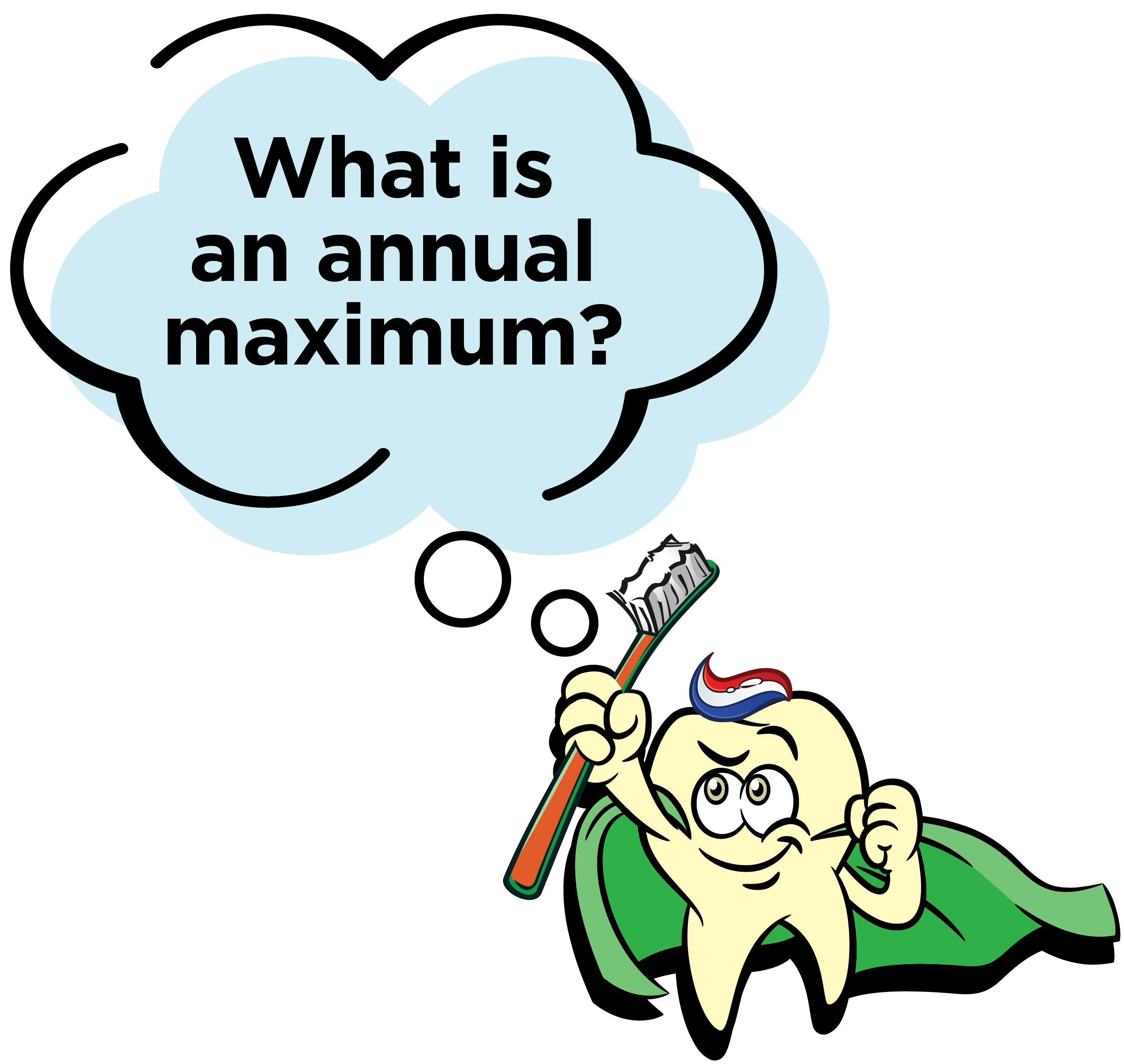Dental Insurance Terms Explained: Annual Maximum
What is an Annual Maximum?
 An annual maximum in a dental plan is the total amount your dental insurance will pay for dental benefits for each person covered by the plan within the benefit period, e.g., a year. Once this limit is reached, you are responsible for all additional costs until the benefit period resets.
An annual maximum in a dental plan is the total amount your dental insurance will pay for dental benefits for each person covered by the plan within the benefit period, e.g., a year. Once this limit is reached, you are responsible for all additional costs until the benefit period resets.
The annual maximum in dental insurance is sometimes confused with the “out-of-pocket maximum,” which typically applies to medical insurance. The “out-of-pocket maximum” refers to the maximum dollar amount you have to pay for medical care—it is not relevant to dental insurance.
Examples:
- If your annual maximum is $1,000, once your dental insurance company has paid out $1,000 for your dental care in a given benefit period, you will be responsible for any additional costs.
- Think of “annual maximum” as the total dollar amount paid by the insurance company for your dental care, not an amount you have to pay before insurance benefits kick in.
FAQs
- What happens if I reach my annual maximum? You will be responsible for paying any additional dental care costs until the new benefit period begins.
Insider tip: Exceeding the annual maximum is one of the main reasons why a dental claim might be denied—and what you can do to avoid that outcome.
- Do preventive and diagnostic services count toward the annual maximums? Maybe. It depends on your dental plan so check carefully.
- What can I do if I need a dental plan with a higher annual maximum than my group plan offers? Great question. If you have a basic dental insurance plan through your job, consider asking your employer about adding insurance options that come with higher monthly premiums but also higher annual maximums and additional benefits. Or you might want to purchase secondary dental insurance, like an individual policy, to coordinate with your group plan.
- Is the annual maximum the same as the annual out-of-pocket maximum? No. The annual maximum is the total amount your dental insurance will pay for your dental care during the benefit period, e.g., $1,000 in a given calendar year. Out-of-pocket maximum is a term used in medical insurance.
- Does the annual maximum apply to orthodontia? Orthodontia benefits (if available under your plan) are processed differently. Typically, they are subject to a lifetime maximum.
Example of an Annual Maximum
This chart shows an example of how a $1,000 annual maximum is applied to the preventive and restorative dental care a patient might require during the benefit period, here: January through December. The total cost exceeds the annual maximum and the patient will be responsible for $300.

Delta Dental of Arkansas Offers Dental and Vision Insurance for Individuals and Groups
Are you interested in our dental coverage plans so you don’t have to pay the full dentist bill yourself? Check out our insurance options for individuals and families, and small, mid-size and large groups.
And while you’re browsing, take a look at our vision insurance, too.
More Dental Insurance Terms Explained
- What is a premium?
- What is a waiting period?
- What is a network dentist?
- What is a benefit period?
- What are preventive/diagnostic, basic and major dental procedures?
- What is a deductible?
- What is a copay?
- What is co-insurance?
- What is an annual maximum?
- What is a claim?
- What is an explanation of benefits (EOB)?
- What is a pre-determination of benefits?
- What are out-of-pocket expenses?
Back to Dental Insurance Terms Explained: A Quick Guide
Are there additional dental insurance terms you’d like us to add to this series?
Email your requests to marketing@deltadentalar.com.

